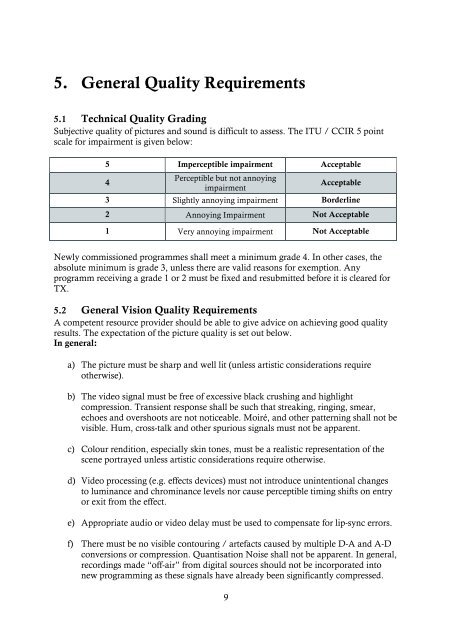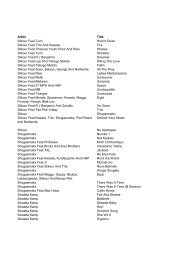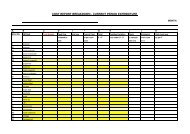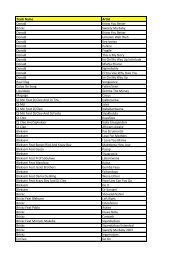Technical Delivery Standards for SD and HD - e.tv
Technical Delivery Standards for SD and HD - e.tv
Technical Delivery Standards for SD and HD - e.tv
You also want an ePaper? Increase the reach of your titles
YUMPU automatically turns print PDFs into web optimized ePapers that Google loves.
5. General Quality Requirements<br />
5.1 <strong>Technical</strong> Quality Grading<br />
Subjective quality of pictures <strong>and</strong> sound is difficult to assess. The ITU / CCIR 5 point<br />
scale <strong>for</strong> impairment is given below:<br />
5 Imperceptible impairment Acceptable<br />
4<br />
Perceptible but not annoying<br />
impairment<br />
9<br />
Acceptable<br />
3 Slightly annoying impairment Borderline<br />
2 Annoying Impairment Not Acceptable<br />
1 Very annoying impairment Not Acceptable<br />
Newly commissioned programmes shall meet a minimum grade 4. In other cases, the<br />
absolute minimum is grade 3, unless there are valid reasons <strong>for</strong> exemption. Any<br />
programm receiving a grade 1 or 2 must be fixed <strong>and</strong> resubmitted be<strong>for</strong>e it is cleared <strong>for</strong><br />
TX.<br />
5.2 General Vision Quality Requirements<br />
A competent resource provider should be able to give advice on achieving good quality<br />
results. The expectation of the picture quality is set out below.<br />
In general:<br />
a) The picture must be sharp <strong>and</strong> well lit (unless artistic considerations require<br />
otherwise).<br />
b) The video signal must be free of excessive black crushing <strong>and</strong> highlight<br />
compression. Transient response shall be such that streaking, ringing, smear,<br />
echoes <strong>and</strong> overshoots are not noticeable. Moiré‚ <strong>and</strong> other patterning shall not be<br />
visible. Hum, cross-talk <strong>and</strong> other spurious signals must not be apparent.<br />
c) Colour rendition, especially skin tones, must be a realistic representation of the<br />
scene portrayed unless artistic considerations require otherwise.<br />
d) Video processing (e.g. effects devices) must not introduce unintentional changes<br />
to luminance <strong>and</strong> chrominance levels nor cause perceptible timing shifts on entry<br />
or exit from the effect.<br />
e) Appropriate audio or video delay must be used to compensate <strong>for</strong> lip-sync errors.<br />
f) There must be no visible contouring / artefacts caused by multiple D-A <strong>and</strong> A-D<br />
conversions or compression. Quantisation Noise shall not be apparent. In general,<br />
recordings made “off-air” from digital sources should not be incorporated into<br />
new programming as these signals have already been significantly compressed.
















